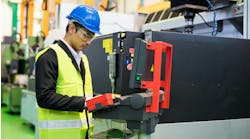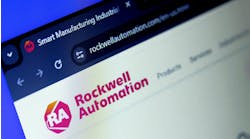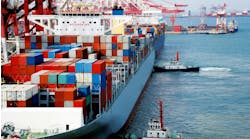In September, Dan Pikelny presents the opening keynote: "Navistar Closes the Loop on Product Design Using Real-world Data" at the third-annual Smart Industry conference in
Chicago. Today the vice president of analytics with Navistar shares his thoughts on the relationship between data and design, telematics and anticipating customers' needs.
Smart Industry: How does data inform design?
Dan: Today's trucks are more connected than ever before, collecting data on everything from fuel efficiency to miles traveled per month. In addition to keeping trucks running properly, this data helps the industry build better trucks.
The critical component to this process, which helps Navistar stand apart, is our open-architecture, all-makes diagnostics system, OnCommand Connection, which monitors the performance of every truck in a fleet, regardless of its make, model or engine. Using this system, Navistar currently collects data from more than 300,000 vehicles, which is critically important to keeping those vehicles up and running, every day.
By better understanding this data, Navistar can also support faster, better-targeted product improvement and innovation. Rather than making assumptions about how a truck might be used, and then testing vehicles based on those assumptions, we can use telematics, GPS and other data to identify real-world usage patterns, and adjust future vehicles’ design to ensure they meet these exact needs.
Traditionally, field-testing new truck models focused broadly on all potential conditions, including weather and usage patterns. By using OnCommand Connection data to create “Usage Clusters,” however, we can now field-test trucks under the specific types of conditions they are expected to withstand. This is helpful in determining whether or not to design completely new vehicles.
For example, Navistar considered producing a vehicle aimed at satisfying the needs of low-frequency users more cost-effectively by utilizing lighter-duty components. We learned, however, that many low-frequency users were also high-intensity users, meaning that the lighter-duty components might not have been adequate to their needs.
Smart Industry: How have telematics, GPS and other digital-transformation tools changed your industry?
Dan: Adding a new dimension of efficiency and productivity. Here are just a few examples:
- Over-the-air programming: This technology tool provides drivers and fleets with improved uptime by updating engine control modules (ECMs) to reflect the latest manufacturer-approved software calibrations. These updates used to require visits to a dealer or other service facility. Now, they can take place remotely through a safe, secure wi-fi connection. This tool provides drivers and fleets with an added measure of ease, convenience, efficiency and productivity.
- Mobile notifications: When a fleet leverages an open-architecture, remote-diagnostics system, truck drivers all across the fleet can receive mobile notifications about pending performance issues before they happen. This ability to predict and head off potential problems helps drivers save time they might otherwise have spent with their truck broken down on the side of the road.
- Activity reports: By better tracking periods when trucks aren’t being used, fleets can more readily schedule maintenance during planned downtime, avoiding the need to make service visits at times when the truck is scheduled for use.
- Environment tracking: Truck drivers’ on-time delivery is enhanced when mobile data is used to track emerging traffic and weather patterns, approaching truck stops, hotel locations and more. Real-time access to this information enables drivers to cut down on time spent fighting traffic, braving hazardous weather or searching for lodging.
Smart Industry: Navistar has become more nimble as a result of technology. How does that enable you to serve your customers better?
Dan: One way we have become more nimble is by increasingly anticipating customers’ requirements before they happen.
By capturing and analyzing a steady stream of data, we can identify potential issues early, and plan proactive maintenance accordingly, in order to help customers avoid costly downtime and expensive repairs. For example: one truck customer has experienced a 28% reduction in down days and a 31% reduction in repairs due to the preventive aspect of its remote-diagnostics system.
Because we can track vehicles’ geographic location, Navistar can also direct drivers to service facilities that are best suited to their maintenance needs, including having available technicians, open service bays and the right repair parts in stock. That capability really improves our ability to be nimble in our response to customer needs.
Our analysis of vehicle data can also help customers in ways they never suspected. For example, telematics data, assessed through analytics, can pinpoint driver behaviors that reduce fuel efficiency, such as excessive idle time, harsh braking or rapid acceleration. Customers’ fleets are also better empowered to select the specific product features and other specifications needed to optimize their vehicles’ fuel efficiency.
These are just a few examples of new, value-added responsiveness that are made possible by the combination of telematics and analytics.
Smart Industry: What element of digital transformation most excites you?
Dan: Our world is changing fundamentally as we become ever more data driven. Devices that are part of the Internet of Things will change entire industries. For example, both the truck and auto industry are thinking about the potential impact of autonomous vehicles that could lead to different ownership models. While that’s not going to happen immediately, we are on a path to that future. And thinking about customers’ requirements in advance, using data-driven insights, will become ever more critical.
For example, we were the first manufacturer to focus on uptime–the time during which a vehicle is up and running and making money for its owner. We strongly believe that the ability to improve vehicles’ uptime will be critical to the transportation industry of the future.
What’s exciting to me, from an analytics professional’s perspective, is working with data to enable that future. We are already using data to help design and test vehicles; but we have an opportunity to participate in a much bigger change.
In the short term, we are also working across all the areas of our company to make it more data driven. From Finance to Sales to Purchasing, we are using data to change the way we do business.





